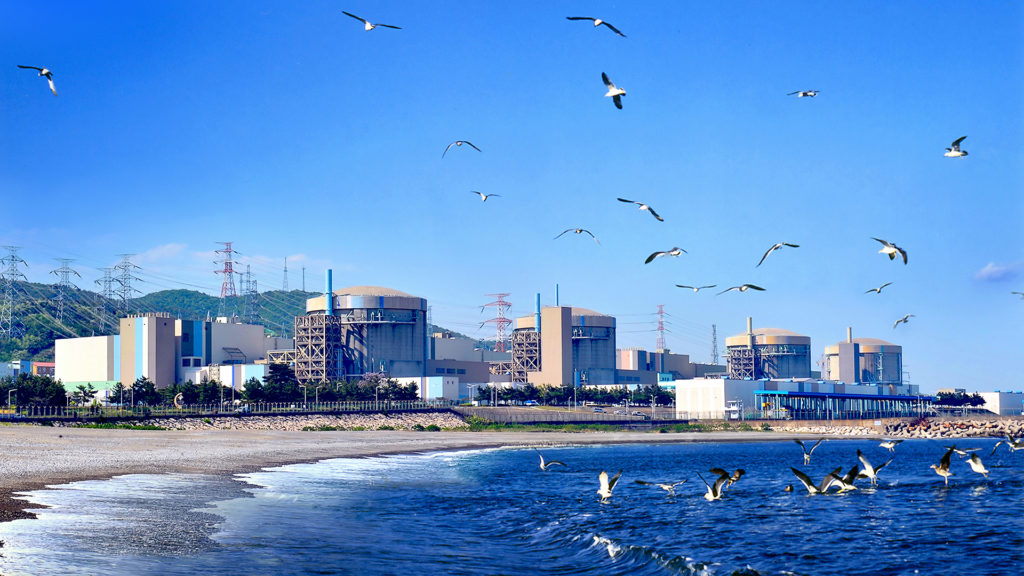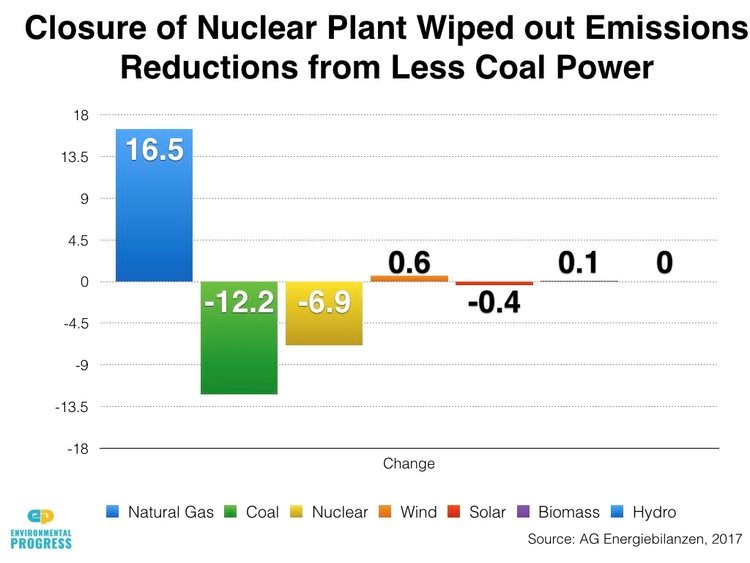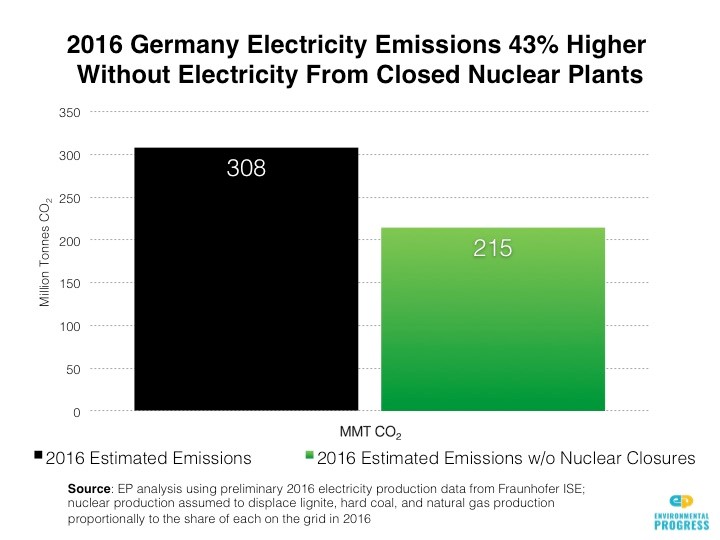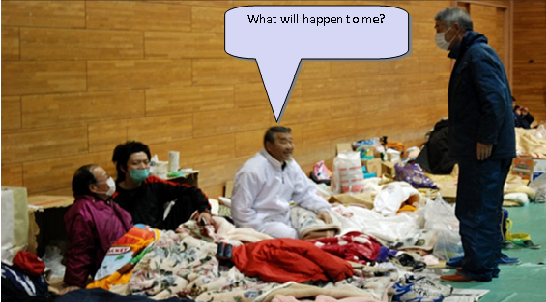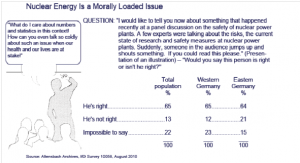With the second anniversary of the Fukushima accident having just passed, it was with little fanfare outside of Japan. There were the requisite articles in the press about Japan and its quest to reform its energy infrastructure. There was talk about the devastating consequences of the tsunami and the Fukushima nuclear accident. Those who are pro nuclear continue to state how Fukushima shows that nuclear power is indeed safe while those opposed argue that Fukushima clearly demonstrates why all nuclear power should be eliminated.
Let’s look at it from a different perspective. I titled this post “Nobody died from radiation and nobody will…” for a reason. The WHO has just released its report on Fukushima and concluded that there will be an immeasurable increase in cancers in the long term from this event. While still a somewhat-flawed report (uses the too-conservative linear low dose theory) showing some increased risk for a small group; there is a clear conclusion that radiation from this accident has not been harmful to the people of Japan. This is great news. We can draw a conclusion that even after a very bad nuclear accident where there are releases, people can indeed be protected from radiation with no measurable health impact – a very important conclusion for the future of nuclear power and for how we manage possible future events.
There are important lessons the global industry must learn from this event but on this second anniversary I really want to focus on Japan. We tend to talk about how this accident impacts us as an industry arguing the merits of nuclear power – for now let’s keep our thoughts with the Japanese people who are living it day in and day out. For these people their suffering is far from over “….but the fear remains”.
First of all, I want to continue to express my sorrow to the Japanese people whose lives have been impacted by this horrific natural disaster. With over 19,000 dead and hundreds of thousands without their homes (either because it was destroyed or if they were evacuated due to the threat of radiation from the Fukushima accident) these peoples’ lives have been radically altered and to this day many have very uncertain futures. In addition to families, the economy of the region has been destroyed.
While we in the industry tend to focus on the accident from a technical point of view in most of our analyses, the focus is somewhat different in Japan (I was privileged to visit Japan this past year, but unfortunately not Fukushima). The following paragraphs come from the official report of the National Diet of Japan Fukushima Nuclear Accident Independent Investigation Commission (NAIIC)– from the Chairman’s message.
“THE EARTHQUAKE AND TSUNAMI of March 11, 2011 were natural disasters of a magnitude that shocked the entire world. Although triggered by these cataclysmic events, the subsequent accident at the Fukushima Daiichi Nuclear Power Plant cannot be regarded as a natural disaster. It was a profoundly manmade disaster – that could and should have been foreseen and prevented. And its effects could have been mitigated by a more effective human response.
What must be admitted – very painfully – is that this was a disaster “Made in Japan.” Its fundamental causes are to be found in the ingrained conventions of Japanese culture: our reflexive obedience; our reluctance to question authority; our devotion to ‘sticking with the program’; our groupism; and our insularity.
Had other Japanese been in the shoes of those who bear responsibility for this accident, the result may well have been the same.
Many of the lessons relate to policies and procedures, but the most important is one upon which each and every Japanese citizen should reflect very deeply. The consequences of negligence at Fukushima stand out as catastrophic, but the mindset that supported it can be found across Japan. In recognizing that fact, each of us should reflect on our responsibility as individuals in a democratic society.”
Read the above carefully – and I invite you to read the entire report if you have not had a chance. So while we focus on the technical, the Japanese people are looking at this accident as a proxy for examining what is wrong with Japan and its culture. This is a defining event in the country’s history that is making the average Japanese citizen question key aspects of their culture.
Beliefs are powerful – so to note that some of what happened and its severity are due to a set of beliefs must be very difficult. And as we all know, there is nothing like a crisis to start people thinking about things differently. Of course it’s not my role to comment on someone else’s culture but only to note how culture can impact us all so profoundly. If ultimately there is change in Japan, we should applaud the Japanese people as I cannot see anything more difficult than changing the way a society thinks.
I recently read “Strong in the Rain”, one of the first books to chronicle the disaster (the tsunami, not just the nuclear accident). It tends to look at real families and the impact to them. It is an interesting read and does help you feel what the people were feeling.
Now let’s go back to the accident itself. From a technical point of view, the Fukushima plant is now in a safe state. There is lots of news about how long it will take to complete the cleanup and decommissioning of the site and its cost, but the reality is that the plant is safe. The concerns going forward are with the contamination of the areas nearby and the ability for people to return to their homes and resume their lives.
We have also seen that the radiation levels in the nearby communities are dropping. A recent report has shown that levels are down by 40% and a number of people have been allowed to return to their homes. And, as stated in the WHO report, it is now very clear that none of the Japanese public will suffer direct health effects from exposure to radiation.
But that doesn’t mean there are no health effects. Similar to those who experienced the accident at Chernobyl, the main impact to health is psychological. And this comes from the very basic issue of fear. People are afraid of the impact of radiation to them and their families. People are afraid of not having a future as their homes have been destroyed. And in the case of Japan, people are stigmatized – they are ashamed to be from Fukushima. The result: depression, chronic anxiety, panic attacks, lack of understanding of what to do, PTSD, insomnia, headaches ,excessive smoking and alcohol, anger, irritation, anguish and loss of hope. And of most importance in a society like Japan, there has been a complete loss of trust in authority – people no longer trust the government. With trust gone, people don’t know where to turn for credible information and, most of all, support as they do their best to recover from this disaster.
It is interesting that recently I have heard the term “social license” being used more and more in conferences and discussions. Plant owners around the world clearly understand they operate with the permission of the local community, and that sets how the relationship with the community must work. A loss of trust is a very difficult thing to overcome and rebuilding trust is a long term undertaking.
The fear associated with an accident of this magnitude has broader effects as well. With no clear standards for decontamination after an accident, the Japanese government set goals of bringing the levels down to pre-accident conditions. This target is very ambitious and also not likely necessary. Our extraordinary fears of radiation have resulted in poor decisions being made both during the event and after. It is now too late to try and convince evacuated people that they can go back to homes with higher levels of radiation than before even if the risk of health consequences is minute. The damage is done – trust is gone.
Then there is the impact at the national level. Before Fukushima, nuclear power produced about 30% of the Japanese electricity from 54 reactors. Now all are down except for 2 units. With the new regulator in place and their new rules also having been established, more are expected to be brought back this year. But most will take longer as improvements are made to meet the new requirements. At least things are going in the right direction. But in the meanwhile, Japan is being forced to both reduce electricity use (greatly impacting Japanese industry) and pay huge costs for replacement power using fossil fuels, primarily LNG. Imports were up 25% at a cost of ¥2.5 trillion and about a 4% increase in carbon emissions even though total electricity usage was down.
Lack of a broader focus is not a uniquely Japanese problem – this is a global problem. We spend all of our energy on preventing accidents and convincing people they won’t happen. We don’t spend enough time on building a consensus on how to manage after it happens – and if we have learned anything from this at all – accidents will happen. So this is where we need to do better. We need to develop clear methodologies for accident mitigation and we certainly are; but once again we are very focused on how to ensure there are no releases in future events. We also need a consensus on developing safety guides for decontamination or how to manage once radiation has been released. And most of all we need to think about people; not only how we can best protect them, but then how to give them confidence that they are safe and secure.
There are many positives to be learned from this accident but at this time I leave these to another day. So to all the Japanese people we wish you well and hope you are all able to return to your lives as quickly as possible. Our hearts are with you and you are not forgotten.
There is a strength in the people and as Prime Minister Abe told a memorial service in Tokyo on the anniversary also attended by Emperor Akihito and Empress Michiko, “Our ancestors have overcome many difficulties and each time emerged stronger…… We pledge anew to learn from them and move forward, holding each other’s hands.”


